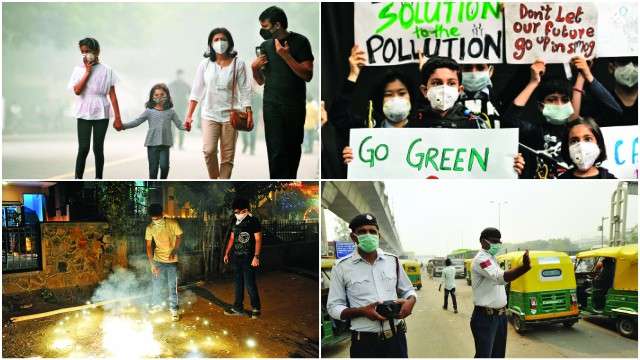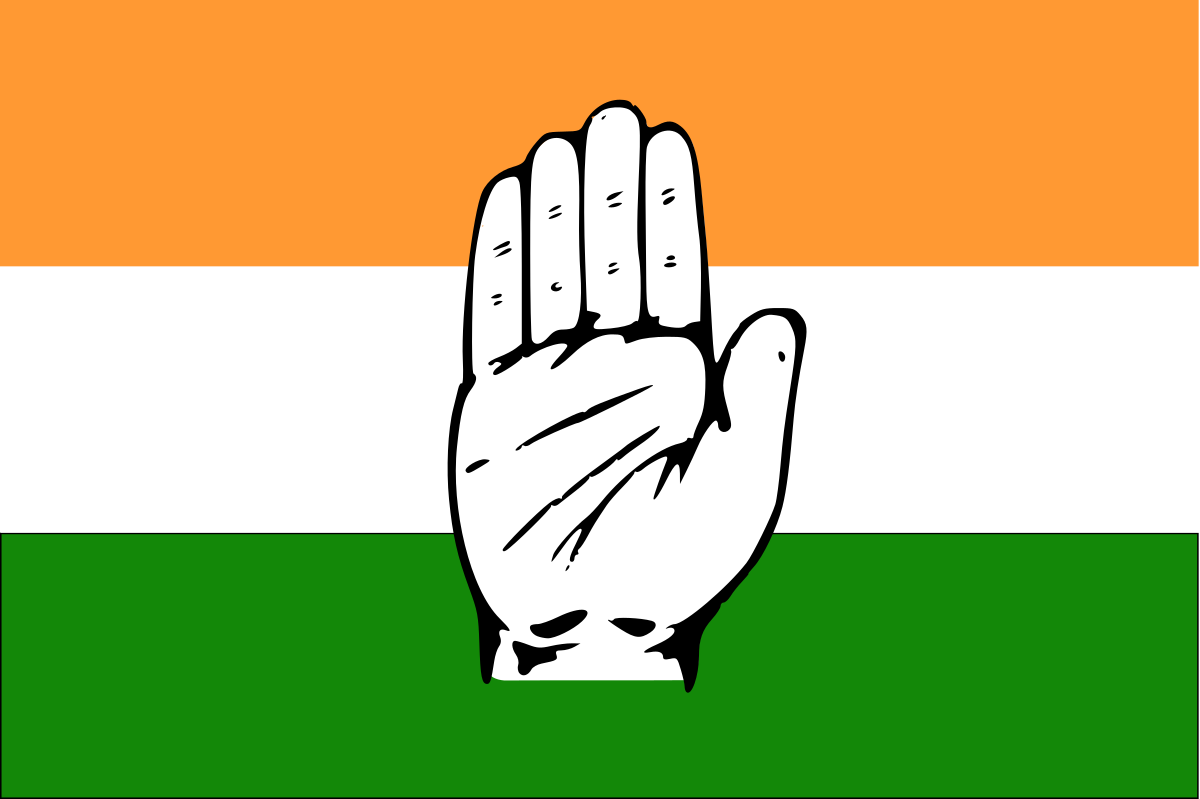The Supreme Court’s ban on firecracker sales will help reduce the exponential spike in pollution levels seen every Diwali. But other choking factors such as farm fires remain a potent threat. After last year’s unprecedented crisis, the Delhi government announced many steps. But little has been done on the ground to clean up the toxic air.
For Rajesh Awasthi, Delhi’s winter always meant crisp, sunny weekends that his family would often spend picnicking in parks, or near India Gate. Then the pleasant season gradually became a health hazard. “This air was our lifeline. We have made it so toxic that it now takes lives. It’s heartbreaking to see my five-year-old son wake up in the middle of the night, coughing and choking,” said the 35-year-old MNC executive at his South Delhi apartment.
The air in Delhi, one of the world’s most polluted cities, has already reached alarming levels, according to the government’s real-time air quality index. Thousands are scrambling to hospitals, complaining of breathlessness, watering of eyes, cough, and wheezing.
With Diwali, when the quantum of toxic pollutants spikes fourfold, only days away, the Supreme Court (SC) has banned the sale of firecrackers in Delhi-NCR till November 1, almost two weeks after the festival of lights (October 19) will be over. Residents in this region will not be able to purchase firecrackers this Diwali.
It’s a desperate move that looks at preventing a repeat of last year’s pollution crisis in Delhi — worst in two decades. The Indian Medical Association (IMA) called it a pollution epidemic. People queued to buy face masks. The Aam Aadmi Party (AAP) government was forced to temporarily shut schools, halt construction projects and promise giant air purifiers and even artificial rain.
Supreme Court experiment
The ban on cracker sales is an experiment to find out whether there would be a positive effect, particularly during Diwali, a SC bench comprising Justices AK Sikri, AM Sapre and Ashok Bhushan said on Monday. This was after a petitioner submitted that extensive use of firecrackers was one of the reasons for the exponential rise in air pollution during Diwali last year.
Scientists working with the government claimed that the ban can “help cut down on pollution by four times, if implemented well on the ground”. While even as the experiment is being done to assess its impact on air quality, experts said, “weather conditions and wind speed” will be the deciding factors for spike in pollution levels this winter.
On Friday, the SC upheld its ban and lamented that it was given a communal colour by a few sections of the society. The court clarified that there is no ban on bursting crackers till 11 pm. The Punjab and Haryana High Courts also clarified that there is no ban, but crackers can be burst only between 6.30 pm and 9.30 pm.
The ban in Delhi-NCR came in after a report on air pollution from firecrackers was submitted by the Central Pollution Control Board (CPCB) before the apex court. On September 12, the Board wrote to the State Pollution Control Boards (SPCBs) and all pollution control centres (PCCs) to conduct a monitoring survey between October 12 and October 19.
“We have written to all pollution boards to submit the final data collected by November 14. A compiled report can be expected around November 30. Also, we have requested respective boards to organise mass awareness campaigns against firecracker burning. Last year, pollution levels spiked to three to four times on and after Diwali. The ban can help cut down this addition to pollution levels,” said Dipankar Saha of CPCB.
The 2016 crisis
The 2016 study shows a dangerous spike in pollution levels at monitoring stations under the Delhi Pollution Control Committee (DPCC) — Anand Vihar, Punjabi Bagh, RK Puram, and Mandir Marg. Particulate Matter (PM) 2.5, less than 2.5 micrometers in diameter, which can be inhaled and lodged in the lungs and blood cells, is always the main killer. It causes breathlessness, throat irritation and wheezing. Its levels, in micrograms per cubic meters, were alarmingly high — from 403 to 783 (Punjabi Bagh), 292 to 714 (RK Puram), 350 to 849 (Anand Vihar) and 254 to 691 (Mandir Marg). As per Indian standards, PM 2.5 levels must not be above 60. According to a Centre for Science and Environment (CSE) report, pollution levels reached 15 times higher than safe limits, prescribed by the Indian Meteorological Standards and the World Health Organisation.
Low wind speed, typical of winters, also causes pollutants to remain hung in the air; the skies do not get cleared up. “Wind speed is extremely low (less than 10 kmph) in winters which causes pollutants to get trapped in the air, thus forming layers of smog. If new pollution activity such as bursting of crackers is added to the air, the levels rise by multiple times causing heaviness in the air, and breathing problems even in healthy adults,” said CSE’s Vivek Chattopadhyaya.
Last winter, the National Green Tribunal (NGT) pulled up the Centre, Delhi and its neighbouring states for not even reading its orders to curb pollution and “playing a joke” on people by doing nothing as a toxic smog engulfed Delhi and NCR. A large number of measures across various sectors were then announced. These included — 20 real-time monitoring stations in the city by October this year, mechanised cleaning of roads, water sprinklers for major roads, closure of thermal power plants, halting of construction projects and diversion of peak-hour traffic under a Graded Response Action Plan (GRAP).
Little action on ground
The GRAP has been planned to be implemented in Delhi-NCR between October 15 and March 15, 2018. Besides, majorly polluted areas such as East Delhi’s Anand Vihar are to be cleaned up. However, most of these measures have been implemented in a poor manner. Mechanised cleaning of roads and sprinkling of water have not yet taken off. According to Public Works Department (PWD) officials, mechanised cleaning will start only after machines are procured for which tenders have been floated and re-floated several times.
“We had a few machines with which we started work but the maintenance is expensive. We had to go for fresh tenders because companies were not coming forward with specifications. Some had the products, but costs were too high. We are now in the process of procuring 20 machines for cleaning of roads,” said a senior official. Meanwhile, DPCC officials said, three of the 20 new monitoring stations at Jawaharlal Nehru Stadium, Dhyan Chand Stadium and Karni Singh Shooting Range have started functioning, while the rest are to come up by October 15.
Last month, the SC pulled up the Delhi government for its “lethargic” response on pollution from firecrackers, and said the steps taken so far were limited to issuing directions which was “merely paperwork”. The court said no specific action plan has been laid down by Delhi government to make children aware of the hazards of bursting crackers.
“This is disconcerting. It is high time that government authorities realise that the cost of ill health, particularly among children, is far greater in psycho-social terms than in financial and economic terms. The adage that ‘prevention is better than cure’ is fully applicable in the present circumstances,” it said. It observed that there was no doubt that residents of Delhi-NCR were entitled to breathe unpolluted air and protection of their health from the adverse consequences of breathing in polluted air caused by bursting of firecrackers.
The controversial road rationing system called Odd-Even will return this winter in case of pollution touching “severe” or “emergency” levels. The scheme means cars will only be allowed on the road on alternate days, going by whether their number plates are odd or even. The GRAP also looks at increasing parking fees at congested areas by three to four times.
The Environment Pollution (Prevention and Control) Authority (EPCA), a SC-mandated body to monitor air pollution in the city, has prepared the GRAP for this year, which says measures under the “severe” and “emergency” categories also include stopping heavy goods vehicles (except those with essentials) from entering the city. The transport department and the traffic police will be responsible for identifying alternative routes for these vehicles.
Also, the municipal corporations and other government agencies will be tasked to identify construction sites across the city. “All constructions will be stopped in case of air quality reaching severe levels. District-level committees will be formed to monitor construction sites,” said an official. Besides, Pollution Under Control (PUC) test centres will be monitored by the state transport authority and the government’s task force. The EPCA has also started a monitoring drive at 10 border points of the city to assess the movement and volume of trucks and the impact on air quality.
Farm fires
Smoke billowing from burning of paddy stubble in farms between October and November move to Delhi and choke lungs. The situation gets aggravated when the haze gets mixed with Delhi’s massive vehicular pollution and becomes heavier and deadlier.
The NGT banned stubble burning in Punjab, Haryana, Uttar Pradesh, Rajasthan and Delhi in December 2015, but the order has remained largely ineffective. The Punjab and Haryana farmers have begun burning of paddy straw. They say they are dictated by economics and the inability of the state governments to provide alternatives, as was ordered by the NGT.
Haryana is burning stubble in 13.41 hectares of land. About 100 incidents have already been reported. More than 40 cases have been reported from Karnal — declared a model district for straw management. This is when the Haryana government organised 2,900 camps for farmers and educated women on the ill-effects of stubble burning. A total of Rs 75 crore was set aside exclusively for straw management. Subsidies are being transferred in farmers’ accounts after verification.
Non-availability of labour has led to the straw management crisis. Government campaigns to urge farmers to avail of additional machinery at subsidised rates fail to convince them, as they demand a cost-effective solution that meets the time requirement.
In Punjab, in 20 days, farmers have to clear 29 lakh hectares of the land after harvesting and sowing the next crop. There, harvesting has begun in 29 lakh hectares of land. Farmers have threatened to burn 19.7 million tonnes of paddy stubble likely to be generated. Indian produces 500 million tonnes (MT) of crop residues annually. Uttar Pradesh tops the chart with 60 MT followed by Punjab 51 MT—both states are in Delhi’s neighborhood. UP burns 13 MT of crop residues.
Industrial pollution
On Thursday, the NGT ordered inspection of industries in north-west Delhi and closure of illegal units that were causing air pollution. It asked DPCC, Commissioner of Industries and North Delhi Municipal Corporation to conduct inspections in Rohini. The tribunal said burning of carbon and plastic is the worst source of air pollution. It also said that these illegal industries would be liable to pay environment compensation.
(With inputs from Srishti Choudhary)
The killers
PM 2.5, particulate matter, less than 2.5 micrometers in diameter, which can be inhaled and lodged in the lungs and blood cells, is always the main killer. It causes breathlessness, throat irritation and wheezing.
Low wind speed, typical of winters, also causes pollutants to remain hung in the air; the skies do not get cleared up.
Smoke billowing from burning of paddy stubble in farms between October and November moves to Delhi and chokes lungs. The situation gets aggravated when the haze gets mixed with Delhi’s massive vehicular pollution and becomes heavier and deadlier.
Govt laxity
Mechanised cleaning of roads and sprinkling of water have not yet taken off. According to Public Works Department (PWD) officials, mechanised cleaning will start only after machines are procured for which tenders have been floated and re-floated several times.
Three of the 20 new monitoring stations at Jawaharlal Nehru Stadium, Dhyan Chand Stadium and Karni Singh Shooting Range have started functioning, while the rest are to come up by October 15.













